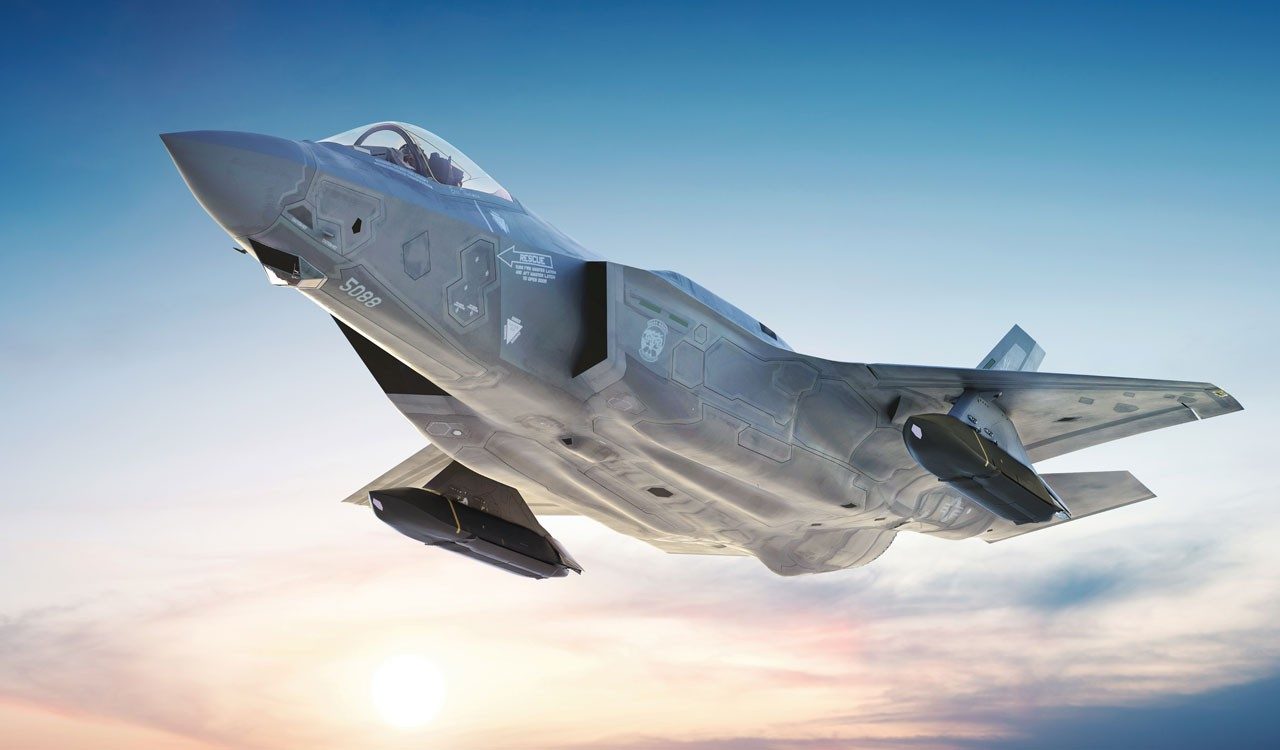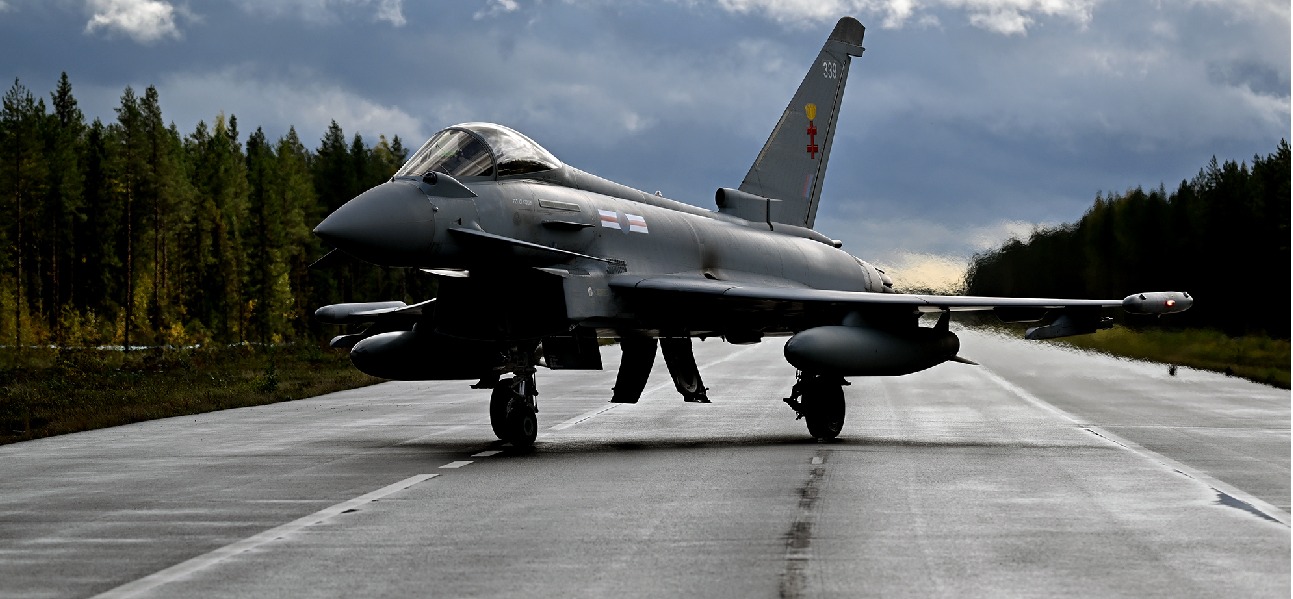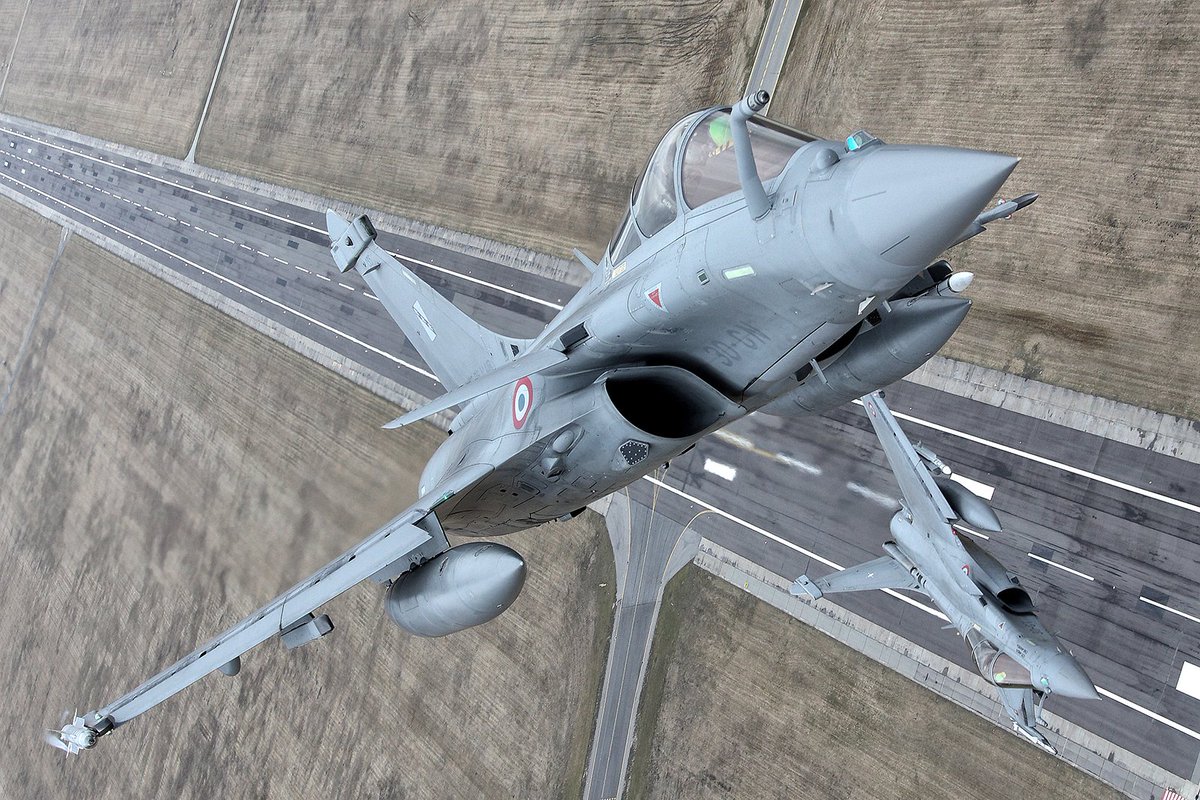Once hailed as the epitome of cutting-edge aerial warfare, the Eurofighter Typhoon soared to prominence in the early 2000s, emerging as one of the “world’s most advanced combat aircraft.”
However, its glory days seem to be fading a bit.
In the ring with the Typhoon is the Rafale, a contender that emerged almost a decade after its European counterpart. Surprisingly, the Rafale is swiftly closing in on the Typhoon’s sales figures.
Presently, the scoreboard shows 680 Eurofighter Typhoons ordered by nine nations, 603 of which have already been delivered, versus 495 Rafales ordered, including 234 by France alone.
These numbers paint a vivid picture, but a perplexing question looms: What is causing the once-mighty Typhoon to struggle to establish its market presence? To unravel this enigma, one must delve into the fighter jet’s storied history and the intensifying competition that has reshaped the battlefield.
History Of Eurofighter Typhoon
The Eurofighter Typhoon, a European multinational twin-engine, supersonic, canard delta wing, multi-role fighter, was originally designed for air superiority. With two engines producing approximately 150,000 horsepower and achieving speeds up to Mach 2.35 (nearly 2,900 kilometers per hour), the Eurofighter Typhoon is an all-weather, twin-engine, multi-role combat aircraft capable of air-to-air and air-to-ground operations.
On March 27, 1994, the Eurofighter Typhoon DA1 (Development Aircraft) made its maiden flight in Manching, Bavaria. The German Air Force introduced the first Eurofighter into service in 2003, marking 30 years since its inaugural flight.
The Eurofighter consortium, comprised of Airbus (Airbus Germany supplies the center fuselage section, Airbus Spain the right wing), BAE Systems (UK), together with Leonardo (Italy), oversees the management of the Eurofighter Typhoon in collaboration with the four partner nations.
The consortium includes Germany, the United Kingdom, Italy, and Spain, with five export customers: Austria (15 aircraft), Saudi Arabia (72), Oman (12), Kuwait (28), and Qatar (24).
Germany’s Eurofighter Replacement Plan
Germany, one of the nations involved in the Eurofighter’s joint development, has unveiled plans to replace the formidable aircraft with the New Generation Fighter. Right now, it is involved in developing the Future Combat Air System (FCAS), a ‘6th Generation’ fighter being developed by Dassault Aviation, Airbus, and Indra Sistemas.
The country also preferred to acquire 5th-generation F-35 fighters from the US to boost its defenses like most European nations.
Airbus is presently producing 38 Tranche 4 Eurofighters, dubbed the Quadriga, in Manching near Ingolstadt for the German Air Force. The company is scheduled to deliver 30 single-seaters and eight twin-seaters between 2025 and 2030, as per the contract signed at the close of 2020.
These new aircraft are intended to replace the Bundeswehr’s initial tranche of Eurofighters. According to current projections, Eurofighter production in Germany will cease in 2030 upon the delivery of the final Tranche 4 aircraft. This would result in a 10-year production hiatus for the domestic industry until the Future Combat Air System (FCAS) becomes operational in 2040.
Without a subsequent order, combat aircraft manufacturing in Germany would cease imminently, resulting in job losses, diminished tax revenues, and a loss of cutting-edge technologies and expertise.
To avert this scenario, Airbus asserts that timely initiation of the further development of the Eurofighter (Long-Term Evolution; LTE) and a decisive commitment to procuring new Eurofighters (Tranche 5) are essential.
Spain’s Stance
Airbus is ready to deliver 20 new Tranche 4 Eurofighters to the Spanish Air Force from 2026 to 2030. Halcon 2 would comprise around 25 Eurofighters for the Spanish Air Force.
On the other hand, BAE Systems suggests that despite its planned retirement in 2040, the Eurofighter Typhoon FGR4 could continue to enhance the UK’s air capabilities alongside its advanced F-35 and under-development next-gen fighter aircraft.
At the BAE Systems’ Warton production facility, Mike Baulkwill, the Combat Air Strategy director at BAE Systems, points out that as international Eurofighter operators plan to fly upgraded versions of the aircraft well into the 2060s, the Royal Air Force (RAF) could extend the service life of its own fleet beyond the currently projected retirement date of 2040.
Intensifying Competition
The Eurofighter Typhoon is a 4.5-generation fighter that competes against formidable opponents like the American F-15EX, French Rafale, Swedish Saab JAS-39 Gripen, and even China’s J-10 CE. Industry giants like Lockheed Martin, Boeing, Airbus, and Dassault Aviation are rolling out their cutting-edge aircraft, and the Eurofighter finds itself locked in fierce competition.
The fifth-generation behemoth F-35 Lightning II, a warplane that has captured major markets in Europe, North America, and the Indo-Pacific, further complicates matters for Eurofighters.

Eurofighter Typhoon vs Dassault Rafale
While the Typhoon soared high, a challenger emerged from the shadows – the French-born Dassault Rafale.
France – which was a Eurofighter consortium – withdrew from the program in July 1985 due to differences in the definition of the aircraft’s role and developed its own project, the Dassault Rafale.
The Eurofighter Typhoon and Dassault Rafale are both contenders for air superiority. They are currently in production and have demonstrated success in the limited combat they have seen. While the Eurofighter has accumulated over 20 years of service, the Rafale recently reached the 20-year mark since entering service in 2004.
Both jets have garnered orders from numerous countries, both within and outside of Europe. Outside of Europe, Kuwait, Saudi Arabia, Qatar, and Oman have purchased the Eurofighter, whereas the Rafale has been acquired or has pending orders from India, the UAE, Egypt, Indonesia, Qatar, Greece & Croatia.
In recent years, Rafale’s order books have surged, resulting in Dassault facing a backlog. The recent sale of Rafales to India has notably bolstered the French fighter’s prominence in the global market, besides its massive contract with the UAE after the fallout with the US over F-35 stealth fighters.
Perhaps the most significant blow to the Typhoon’s aspirations came from an unexpected quarter – India’s decision to opt for the Rafale over its European counterpart.
In 2012, when India sought to procure fighter jets, a meticulous evaluation process pitted the Typhoon against the Rafale. Ultimately, India opted for Rafale fighters, with experts arguing the superiority of ‘tried and tested’ French Mirage-2000 jets in the Indian Air Force.

Confronting Germany’s Rigour
Germany’s rigorous policies have further compounded the Typhoon’s woes, as evidenced by the nation’s decision to halt the sale of 48 Eurofighter Typhoons to Saudi Arabia over human rights issues, a ban they eventually lifted.

Germany’s initial reluctance to approve the sale of Eurofighter Typhoon jets to the Royal Saudi Air Force promoted the oil-rich kingdom’s search for options, and French Rafales quickly emerged as potential replacements. Now, reports indicate that US F-15EX is also competing for the Saudi contract.
Incidentally, experts say one reason why India opted for Rafale jets was uncertainty over German defense policies, unlike their French counterparts. Germany has recently relaxed its defense policy to win the Indian market, and New Delhi could move forward with acquiring 126 fighter jets after the elections.
Both Eurofighters and Rafales are competing for the lucrative deal, with French jets clear favorites with Indian Air Force veterans.
As the winds of change continue to sweep through the skies, the Eurofighter Typhoon finds itself at a crossroads, its once-soaring aspirations met with the harsh realities of a rapidly evolving market. Whether this formidable fighter can regain its footing and soar to new heights remains to be seen, but one thing is certain: the battle for air supremacy is far from over, and only the fittest will survive in this ever-changing theater of aerial warfare.
- Opinion by: Shubhangi Palve
- Contact the author at shubhapalve (at) gmail (dot) com.




